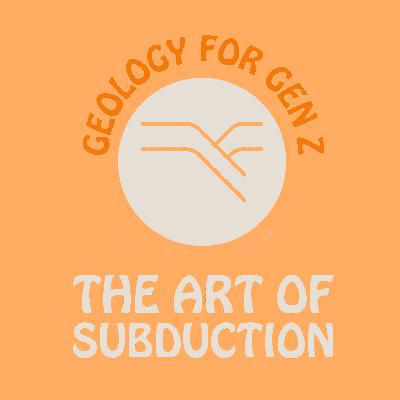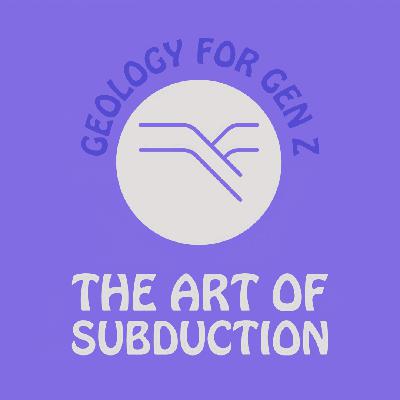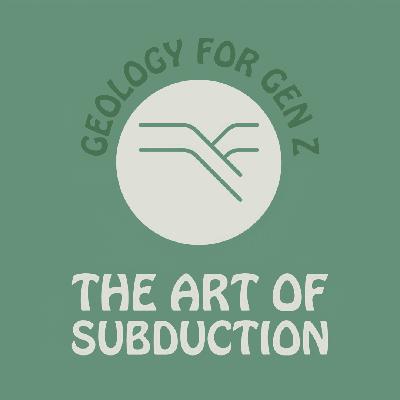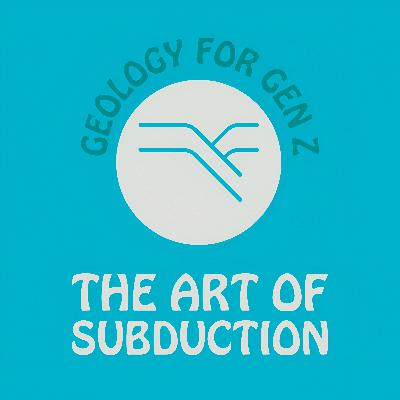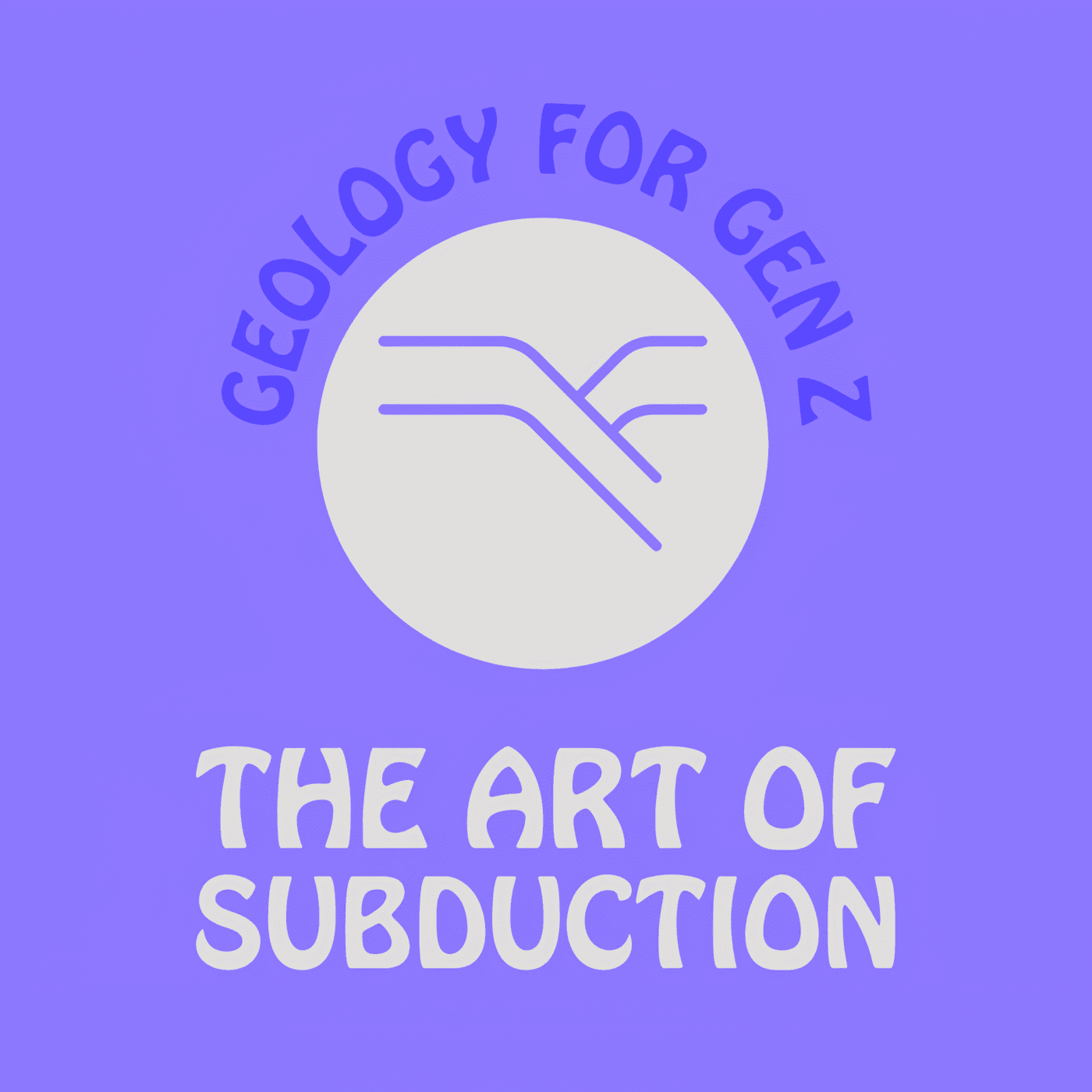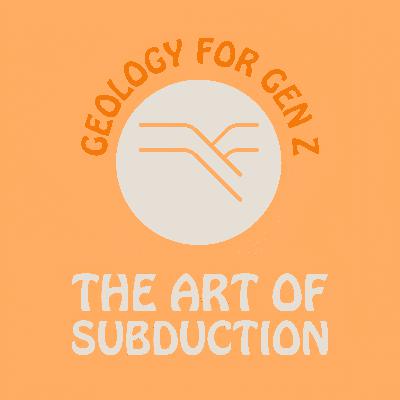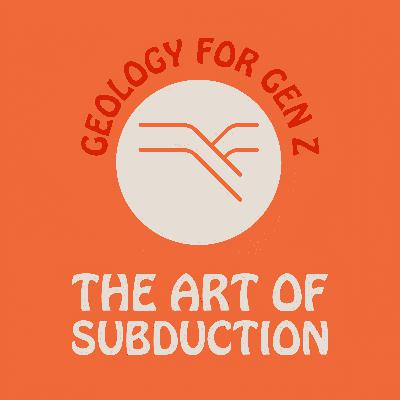Geology as a Major: What’s It Like Studying Geology at UT Austin? (ft. Eleanor Coté)
Description
In this episode of The Art of Subduction, Diya reconnects with GeoFORCE coordinator Eleanor Cote to explore the impact of hands-on learning and accessibility in geosciences. They discuss GeoFORCE’s 11th-grade academy's trip to the Pacific Northwest, where students come face-to-face with formations like Mount St. Helens and Crater Lake. Eleanor and Diya reflect on the importance of hands-on learning, especially when it comes to their own learning. Hear more from Eleanor on what it was like to study geology at UT Austin, how she overcame its challenges, and why it’s beneficial to study geology.
Stay tuned for part 2!
——————
Did you like this podcast? Leave us a rating and review! Follow us on Spotify, Apple Music, or wherever else you get podcasts.
Got a lava questions or want to be featured next? Email me at dgaur@utexas.edu
——————
Transcript
[00:00:00 ] Diya Gaur: Hello and welcome to The Artist's Production. My name is Diya and today I'm here with…
[00:00:17 ] Eleanor Cote: with Eleanor! My name is Eleanor. I am a coordinator with I've been a program coordinator now for two years, and I had the pleasure of having Diya as one of my students for two of the summers.
[00:00:35 ] Diya Gaur: Yay!
[00:00:36 ] Eleanor Cote: 11th and 12th grade, right?
Yes. Yes. So, Eleanor was one of my coordinators for the 11th grade academy, as well as the 12th grade academy. Um, it was super fun actually, like 12th grade we did like the research project and then 11th grade is what you're coordinating now, right?
[00:00:55 ] Eleanor Cote: Um, so I, program coordinators typically do, um, a couple of different things.
Academies per summer, but it doesn't necessarily stay the same each summer. So, for example, last summer, I did, um, one of the 9th grades, I did two 10th grades, and then I did the 11th grade that you were on, um, then this summer, I did a 9th grade, I did, um, two 11th grades and then I did the 12th grade so I think next summer I'll probably be following along the two 11th grade academies that I had so I'll go and be with them on the 12th grade and then I'm not too sure what they're going to give me it kind of depends on just availability and then sometimes they want us to follow some of the groups that we had but it's not always a guarantee so yeah I think the schedule's out right now but I'm not I'm not too Like, I'm not for sure yet which one I'm doing, so, TBD.
[00:01:51 ] Diya Gaur: Can you tell me a bit more about the 11th grade academy and what goes on during it?
[00:01:57 ] Eleanor Cote: Yeah, absolutely. So, the 11th grade, as you remember, is probably Coined as one of our best trips just because we take our students to a completely new environment. And so, um, just a bit of background, uh, the ninth grade students, they stay in Texas and they do like, um, life of the sediment, learn about the rock cycle, um, just introduction to geology, um, sophomore year, they go to Utah and Arizona.
So it's sort of like the American Southwest kind of desert environments, which it's hot. And many students in Texas know that that's, you know, what Texas is like too, so it's not unfamiliar to them. But then going up to the Pacific Northwest on the 11th grade trip We take students up to, uh, places like Mount St.
Helens, Mount Hood, and we see, um, like these big stratovolcanoes that you're not used to seeing in Texas at all. I think there is one quote unquote volcano in Austin. It's called Pilot Knob, and it literally just looks like this. A hill. So, um, students get to see these actual, like, big volcanoes for the first time, and then we talk to them a lot about geologic hazards, and what life is like on an active margin, and so, life on the coast, up in Oregon and Washington, you are sitting right on an active margin, and so, there is a lot of tectonic activity happening, um, You got, uh, plates subducting into one another, causing, um, you know, melt, and so that's why you have this line of volcanoes running from, I think it's like Northern California up all the way up into Canada, and so we hit several volcanoes on that line.
We start off Mount St. Helens the first day, we go to Mount Hood the second day, um, we go by the, I think it's the three sisters, um, we see like Mount, gosh, there's so many, I can't even remember the names of them, um, but you see them all in the distance, right, and they're kind of all in a line, and so we talk about them all being in a line, and and explain to students like how the plates are subducting and why it's causing all of these volcanoes to be sort of in line with one another, right?
And then we take students to Crater Lake which is a caldera, which is basically a volcano that exploded very violently and then collapsed in on itself. And then we take students to uh, what's it called? The Newberry Caldera, so they see another version of a caldera. And then we go out to the coast and we talk about the geologic hazards happening out there.
So the Oregon coastline is prone to having tsunamis. And so a lot of people typically don't think of tsunamis when they're thinking of like geologic hazards, but whenever there's an earthquake happening deep at sea, you know, miles off the coast, that can cause a huge tsunami to come and devastate the entire coastline.
Um, so we teach students all about that too because tsunamis typically don't happen on the Texas coast, the Gulf of Mexico is typically pretty calm, um, and so we like to show students that there are a number of other things to worry about. Besides just, like, tornadoes and hurricanes that we typically receive in Texas, um, and it's also really amazing to get students out of their environment of, um, being in, like, you know, humid Houston or, like, deserty Southwest Texas.
You know, we go up and see these huge pine trees and, um, get to experience cooler weather, typically. This past year, it was 90 plus degrees in Oregon, and it was actually hotter in Oregon than it was in Texas, which, not fun, but, you know, it's the scenery, and then, like, you get to see these huge mountains that You just don't see in Texas.
And so that experience, I feel like for most students and for my, in my own experience too, because I was actually a GeoForce student, that was the trip that made me think like, Oh, the earth is so big and there's so many different types of landscapes and there's so much to study that's not just in my hometown.
It's a very unique experience and I think that's really the aha moment for a lot of kids being like, maybe this is something I could pursue. Kite
[00:06:17 ] Diya Gaur: Yeah, no,
[00:06:17 ] Eleanor Cote: actually
[00:06:18 ] Diya Gaur: I have the booklet from the 11th grade academy, I actually have it right in front of me right now. It's the one that we get on every trip, the, like this one?
The 11th grade academy, right, and so it just gives us an overview of the trip, right, and then, I mean, I remember learning a lot of this stuff and also the name of the podcast comes from like Something I learned on the trip, the art of subducting, so, you know, those connections are really there. Yeah. What was your experience on that trip?
Actually, okay, that was my favorite trip. I think that is the trip that convinced me to go into geology. I was like, Yeah, I can definitely see myself studying this for the, like, next, like, how many ever years, and I think just geology is a field where you'll never get tired of what you're learning. There's just so much to learn and find out about the earth that it's like, when you're helping others, like, I like to help people.
There's a lot of different fields where you can help people, but one thing about geology is that you're kind of bringing up a subject which is so essential to, like, life in general. So we have the issue of, like, climate change, which is going on. It's really important that we get people educated on that, and so that first step of, like, educating people comes from geologists who have to study the environment, like the planet, and then get that information out there to educate the rest of the, you know, world, really.
[00:07:38 ] Eleanor Cote: Absolutely. And I think it's interesting to show students that this type of science is happening in all different corners of the US and of the world. I mean, obviously, GeoForce, we are just, you know, sort of like a US based program, but I mean, these types of Things and this type of research is happening all, all around on all corners of the globe.
I mean, we have researchers at UT who go down to Antarctica. We had a expedition that just went up to Greenland. Um, I mean, people who are studying down in Argentina and Chile and, you know, over in Zimbabwe, you know, places that you wouldn't think like, Oh yeah, let me go do science there. But like science is happening there.
And it's. It's exciting to see and it's exciting to be a part of, definitely.
[00:08:30 ] Diya Gaur: Yeah, and also, so my research mentor who I was with at the 12th grade academy, he's one of the people who went to Greenland for his research. And so he was telling me that when they go on these really big trips for whatever study or just research that they're doing.
doing in general. They have like these super big groups of different types of scientists who come together and they all kind of just collaborate like between biologists, chemists, geologists. I think that is so cool. That is so amazing. And honestly, it's a very interdisciplinary field, like geology in general.
So you need all of these different types of people. And there's a lot of ways you can go with geology. It's not just like learning about the earth, but also It's relationships with, like, other

